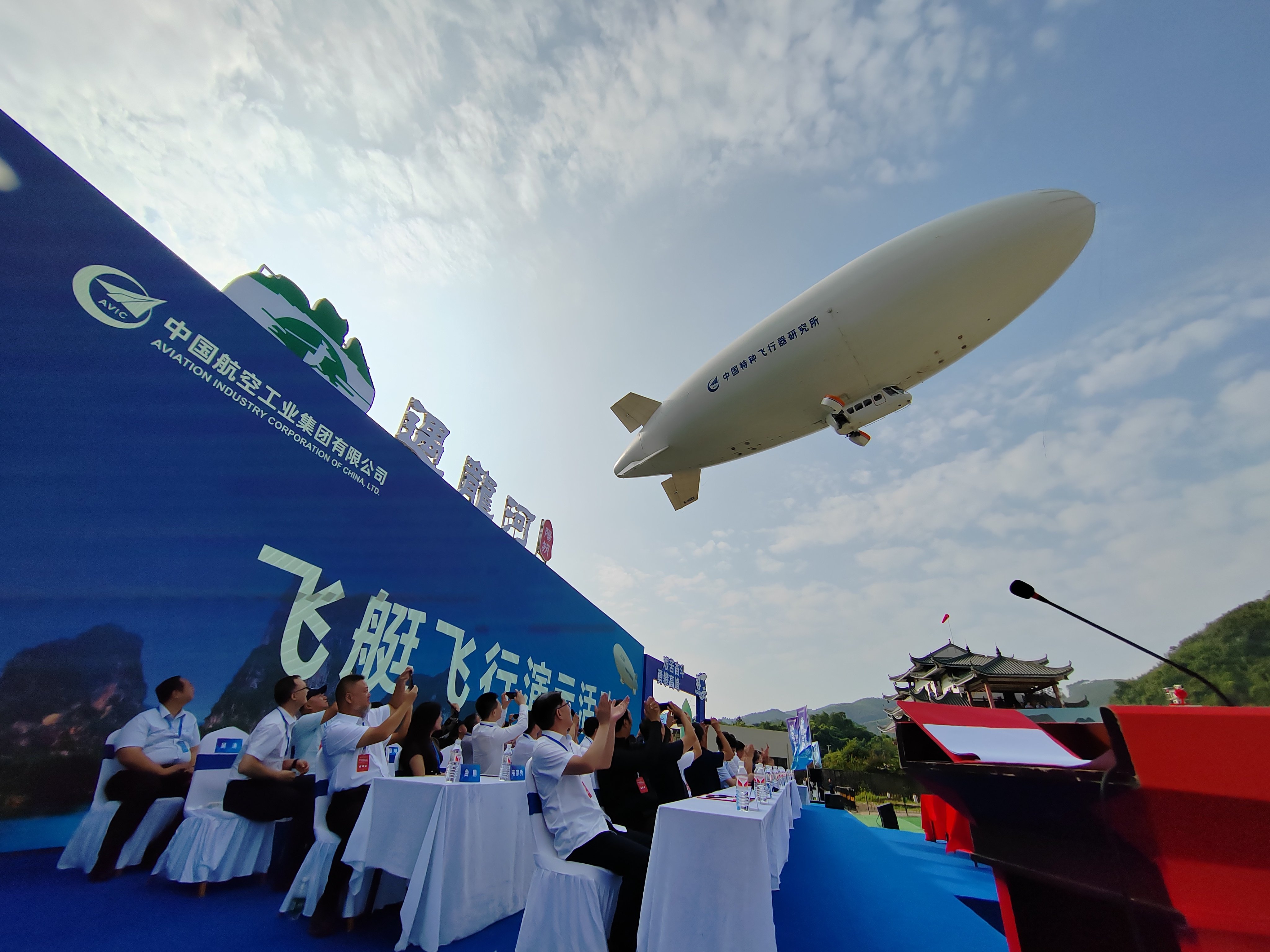China’s Soaring Low-Altitude Economy: A New Frontier with Home-Grown Blimp Delivery
Introduction to China’s Low-Altitude Economy
In recent years, China has seen rapid expansion in its low-altitude economy, an emerging sector focusing on activities within airspace below 1,000 meters. This burgeoning industry encompasses a range of applications, from drone delivery and emergency services to recreational activities and, more recently, the use of blimps for cargo transport. Driven by advancements in technology and supportive government policies, this sector is transforming the logistics landscape and opening up new economic opportunities across the country.

Growth Drivers of China’s Low-Altitude Economy
1. Technological Advancements
China’s strong technological infrastructure has paved the way for sophisticated air vehicles, including drones, unmanned aerial vehicles (UAVs), and blimps. With advanced sensors, artificial intelligence (AI), and data integration, these vehicles are capable of safe and efficient navigation even in challenging weather and terrain conditions. Additionally, developments in battery technology have extended the operational range of these vehicles, making them viable options for last-mile delivery.
2. Government Policies and Support
The Chinese government has recognized the potential of the low-altitude economy to stimulate growth and innovation. Policies have been introduced to support the expansion of low-altitude airspace, simplify regulations, and promote investment in the sector. Pilot zones across various regions, such as Guangdong and Zhejiang, have been set up to test and optimize low-altitude flight management systems, creating a supportive ecosystem for companies looking to explore this emerging market.
3. Growing E-Commerce and Logistics Demand
China’s booming e-commerce sector has increased demand for efficient logistics solutions, particularly in rural and hard-to-reach areas. Traditional logistics methods can struggle with delivery times and costs in such regions. Low-altitude delivery solutions, such as blimps, offer a promising alternative to reach these underserved areas quickly and efficiently.
The Rise of Blimp Delivery in China’s Low-Altitude Market
1. Advantages of Blimp Technology
Blimps, or airships, bring unique advantages to the logistics industry. Unlike drones, blimps can carry heavier payloads and travel longer distances without frequent recharging. Additionally, they have a lower carbon footprint compared to other airborne delivery options and can hover in place, making them ideal for accurate deliveries. Blimps can also operate quietly, reducing noise pollution in urban areas.
2. Home-Grown Innovation in Blimp Development
China’s development of home-grown blimp technology marks a significant milestone in the low-altitude economy. The country’s research institutes and private companies have invested heavily in airship design, materials, and navigation systems, resulting in blimps that are affordable, efficient, and well-suited to local conditions. Notable companies, such as SF Express and EHang, are at the forefront, testing blimp models capable of handling various types of cargo in diverse regions.
3. Successful Pilot Programs
Several pilot programs have been launched across China to test the viability of blimp deliveries. For example, SF Express has successfully used blimps to deliver packages to mountainous areas in Yunnan Province, where traditional delivery methods are both costly and challenging. These pilot programs have proven the feasibility of blimps in delivering goods efficiently, even in areas with limited infrastructure.
Impact on China’s Logistics and Delivery Industry
1. Enhanced Accessibility to Remote Areas
The flexibility of blimps enables them to access remote and underserved regions where roads are often underdeveloped. This capability has significant implications for China’s rural communities, where the delivery of goods like medicine, food, and essential supplies is critical. The use of blimps can improve the lives of residents in these areas by providing a reliable supply chain and facilitating e-commerce access.
2. Cost Efficiency and Environmental Benefits
Compared to traditional aircraft and land-based vehicles, blimps are more cost-effective for long-distance delivery. They consume less fuel and require fewer resources for operation, reducing both transportation costs and the environmental impact. Blimps operate on lighter fuels or even electric power, which lowers greenhouse gas emissions and supports China’s commitment to carbon neutrality.
3. Potential for Disaster Relief and Emergency Services
Beyond commercial delivery, blimps have potential applications in disaster relief and emergency services. When natural disasters strike, road access can be compromised, delaying the arrival of aid. Blimps can carry large amounts of supplies and hover over affected areas, delivering goods even when roads are blocked. This capacity for on-demand supply in emergencies underscores the role of blimps in China’s growing low-altitude economy.
Challenges Facing Blimp Delivery in China
1. Regulatory Hurdles
Despite government support, regulatory challenges remain for large-scale blimp operations. Airspace management, safety protocols, and coordination with existing aviation systems are critical issues that need to be addressed to prevent accidents and ensure public safety. Regulatory frameworks that address these concerns are still evolving, and companies must navigate this complex landscape to expand operations.
2. Weather Dependency and Technical Limitations
Blimps are vulnerable to adverse weather conditions, such as high winds and storms, which can disrupt their ability to maintain a stable flight path. Additionally, technical limitations, such as payload capacity and navigation precision, still require optimization for reliable large-scale deployment. Improvements in weather-resistant materials and autonomous flight technology could help mitigate these challenges.
3. Public Acceptance and Perception
As with any new technology, public perception plays a role in the adoption of blimp delivery systems. Concerns over safety, noise, and visual pollution must be addressed to gain public trust. Educating communities on the environmental and logistical benefits of blimps could improve acceptance and support for their broader deployment.
Future Prospects of China’s Low-Altitude Economy and Blimp Delivery
1. Expansion into International Markets
China’s advancements in blimp delivery have potential applications beyond its borders. The Belt and Road Initiative (BRI) offers a pathway for Chinese logistics technology, including blimps, to be exported to countries with similar geographical challenges. Partnering with other nations for low-altitude delivery could transform cross-border logistics and strengthen China’s position in the global logistics market.
2. Integration with Smart City Infrastructure
The low-altitude economy aligns well with China’s smart city initiatives. Blimps could become a part of an integrated urban logistics network, working alongside drones, automated vehicles, and IoT sensors to create a seamless delivery ecosystem. As cities grow and congestion worsens, low-altitude solutions like blimps may become essential for efficient urban logistics.
3. Innovations in Green Technology
As China aims for carbon neutrality by 2060, innovations in green technology for low-altitude logistics are expected to increase. Blimps, with their low emissions and potential for renewable energy integration, could play a central role in green logistics. The use of solar panels or advanced battery systems could further reduce the carbon footprint of blimp operations, supporting China’s environmental goals.
Conclusion: China Leading a New Track in Low-Altitude Logistics
China’s low-altitude economy is on the rise, powered by technological innovations, supportive policies, and the growth of e-commerce. The development of home-grown blimp technology highlights the country’s commitment to pioneering new solutions in logistics and delivery. While challenges remain, the potential benefits for accessibility, cost efficiency, and environmental sustainability position blimps as a promising addition to China’s logistics arsenal.
As the low-altitude economy continues to expand, China’s success with blimp delivery could set a global precedent, showing how emerging technologies can reshape the logistics landscape and connect even the most remote regions to the global economy.
Thông tin liên hệ của Super Fast VietNam China Express & Logistics
Văn Phòng Hà Nội: 25 Ngõ 81 Láng Hạ, Thành Công, Ba Đình, Hà Nội
Văn Phòng HCM: 86/12 Phổ Quang, Phường 2, Tân Bình, TP.HCM
Kho Bằng Tường, Quảng Tây: 地址: 广西省 崇左市 凭祥市 南大路 广越物流里面 3栋34号
Hotline Việt Nam: 0868.555.383
Website: https://sfexpress.vn/
Xem thêm: Dịch Vụ Vận Chuyển Hàng Hóa Từ Đồng Nai Đi Trung Quốc Nhanh Gọn

